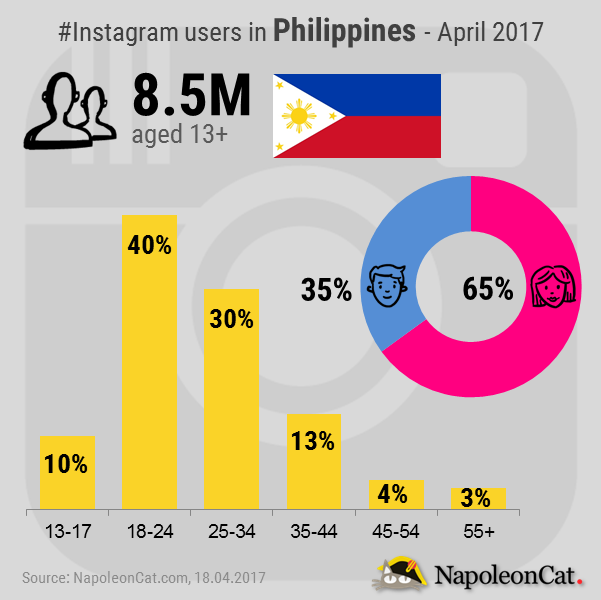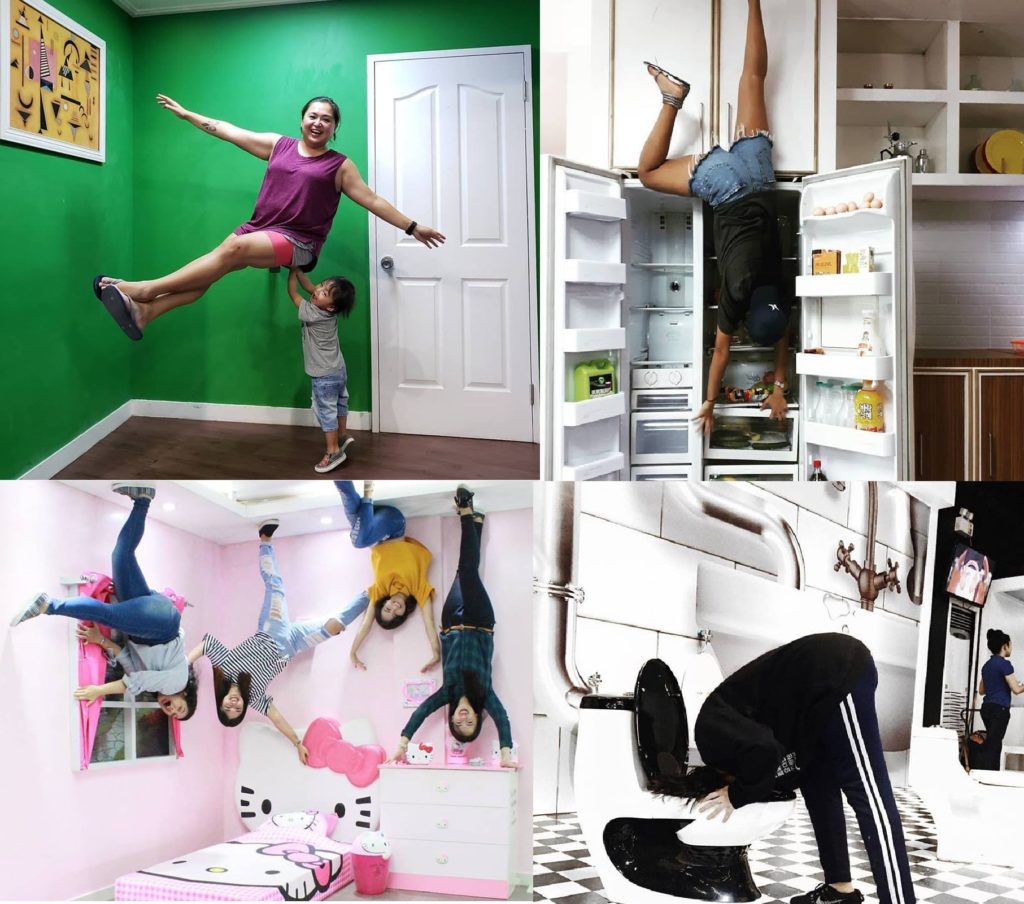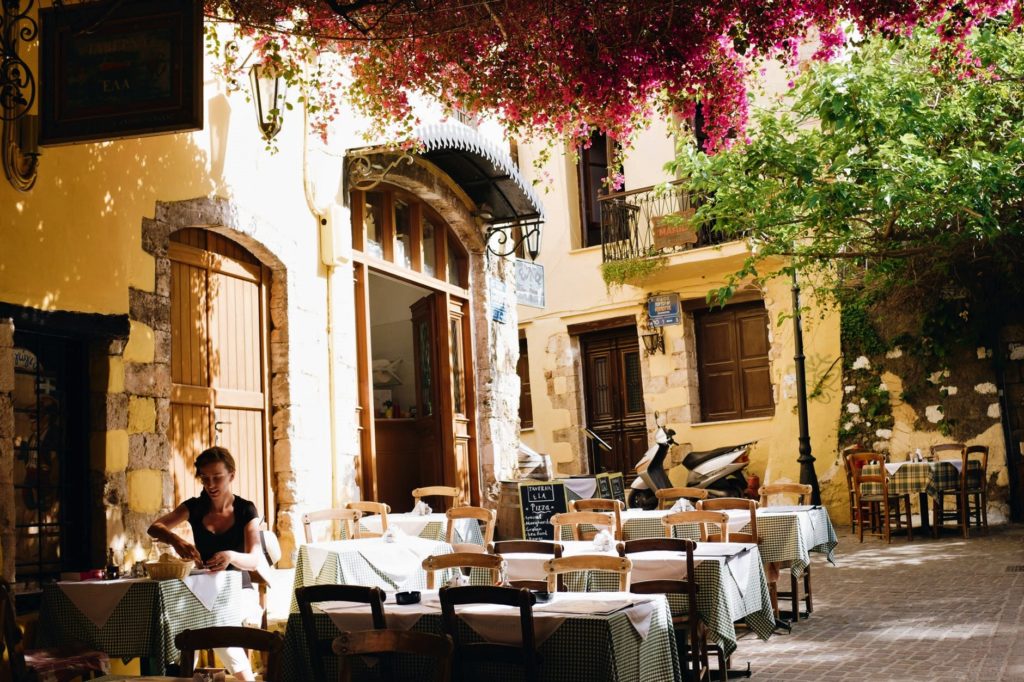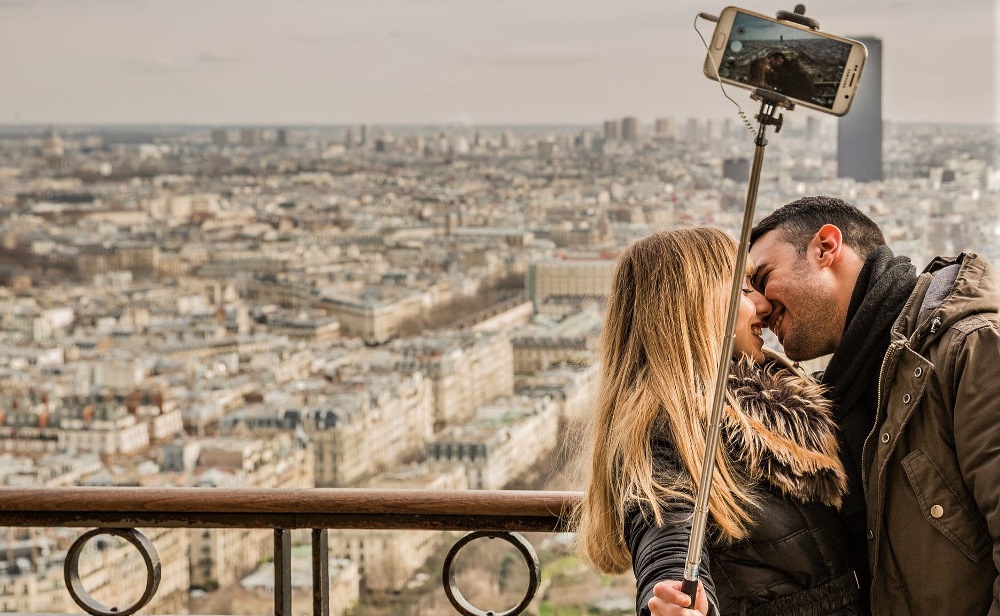Selfie Culture in the Philippines and How it Affects the Tourism Industry – Part 1
The Selfie Capital of the World & the rise of the Selfie Culture
The Philippines earned the title “Selfie Capital of the World” back in 2014 by Time Magazine. Well, technically Makati City was named as the Selfie Capital, with Pasig running a close second. Cebu City ranked in at No.9.
And it should come as little surprise really. Not because Filipino’s are more vain or narcissistic than other people. But because Filipino’s tend to fully adopt any new technology, which improves communication and connecting with each other.
In fact, back in 2001 the Philippines also earned the title ‘Text Capital of the World’. Even today approximately 400 million text messages are sent by Filipinos every day; 142 billion a year.
And just look at these statistics, for three of the most common Social Media Apps:-
- There are approximately 48 million active social media users from the Philippines *
- 42.1 million Filipino’s are on Facebook *
- 13 million Filipino’s are on Twitter * * Source: Expert Gov
- 8.5 million Filipino’s have an Instagram Account**
- 80% of Filipino Instagram Account holders are aged 18-44** ** Source 2017 Omnicoreagency.com

The trend for all things social media, has even led to some unique museums and tourist attractions. Attractions such as Art in Island and the Upside Down Museum have been designed to completely indulge an active Social Media and Selfie nation.

The Selfie Culture is here to stay
Trends either evolve or die. There were many that predicted an early end for the Selfie. The reality is that ‘Selfies’ are now a commonplace activity around the World. They litter our Facebook, Snapchat, Instragram and WeChat newsfeeds. It is a trend that has evolved and gathered pace. Heck! Even our Lola’s and Lolo’s are getting in on it!
As a result, there are heaps of Apps available to beautify your Selfies further. Some come as part of a new Cellphone’s framework platform. Others can be downloaded either for free or for a subscription fee. Check out The Best Selfie Apps for iOS and Android.
After all why trust a stranger to take your photo, risking an unflattering angle, poor lighting, closed eyes or a blurred and wasted shot. When you know you can secure the perfect photo by staging and framing your own; optimizing your well-perfected ‘angle’ and beautifying it prior to upload, using your Retrica App!
It’s fair to say then, that it was a natural and automatic step for Selfies to become part of people’s travel behaviour.
The rise of Selfie Tourism?
With the advances in phone and camera technology, as well as the invention of the ‘Selfie Stick’, travellers and tourists (there is, apparently, a difference! Even if it’s only about setting ones self apart from the other) were finally able to include themselves in their own holiday snaps. Gone are the days of entrusting a stranger with your camera or phone, for a photo at a key landmark.
But just as there is a form of snobbery around the difference between ‘Traveller’ and ‘Tourist’. An element of snobbery or ‘One-Up-Manship’ has developed between travel photos and ‘Selfie-Tourism’. So What is the difference perceived to be?
A Travel Photographer is someone you’re still likely to find on Instagram and Facebook, they will probably have their own Blog too. And their photo galleries will certainly include some Selfies.

But there will be significantly fewer Selfies and, instead, an abundance of stunning landscapes and images; intentionally capturing the beauty, people or atmosphere, of a location, possibly from unique angles. A Travel Photographer is awake enough to be ready to learn about, and then to capture the beauty of, a destination or situation as it presents itself, rather than just rushing straight to the locations everyone else posts photos of. They are looking for a unique angle. Their images may well not be posted until several hours or days after they were taken, and the caption will include lots of information about the location or situation captured.
A Selfie Tourist is someone more interested in posting a perfectly staged Selfie at the latest trendy, or emerging, social media cited travel destination. Their focus is on grabbing an image of themselves in front of a trending landmark to either show-off to those left at home, or just to show that they were there. Their choice of destination may not have been on their Bucket List but rather, a status symbol destination that will afford them maximum opportunity for Selfies to instantly upload to their Social Media Accounts.
Well, this is certainly what Researchers and Academics would have us believing!
“Sometimes, this is because experiencing the place is not even the motivating reason for several tourists to travel to a destination; instead the reason for traveling to the destination is for taking a selfie and posting it on social media to prove to everyone that they are there, in order to increase their ego and self-impression” (Who Are the Selfie-Gaze Tourists)
Posting photos at a trending location is likely to result in an abundance of Likes, Loves, shares and comments from friends and followers. In some cases the caption claims may even be exaggerated; “checking in” when they are not staying at a media-touted hotel. “Best Lunch Ever!!” when they did not eat at the restaurant they photographed themselves outside.

As part of this classification of ‘Selfie Tourist’, academics state that the satisfaction or joy at having visited somewhere is not as significant as the satisfaction and joy the person received, from the comments left on their post, or the numbers of likes or shares by friends and strangers.
That’s a pretty big assumption being made about an awful lot of people that you haven’t even asked, Professors!!!! I don’t think I know anyone who has gone to the expense of travelling to a different city, let alone country, just so they can grab a selfie, because they crave online attention.
Just because people today can upload photos instantly into a publicly, or privately available online photo album (Facebook/Instagram etc) rather than waiting weeks for their film to come back from the Developers. Just because people can include themselves in their own holiday snaps, thanks to advances in technology. Just because peoples holiday location choices may have been influenced by photos they’ve seen on Facebook or Instagram, rather than photos in a brochure at a Travel Agency. How does this equate to people experiencing a destination less, or gaining more joy from people’s online reactions to their photos than being there?!
Doesn’t it just mean that today people are telling their friends and family about their holiday, as it happens, rather than when they get home?
Is the difference really only about timing?
You could argue that neither type of tourist/traveller is all that different. Both could be said to be chasing Likes, Loves and comments on their images, if that’s what it’s really all about. Both could be chasing after the exact same reactions of envy or jealousy from an audience. But with an added hint of middle-class smugness; a ‘I’ve gone off the beaten track for photos of a hidden rice Gin joint no-one else knows about’ attitude. Rather than ‘look at me, I’m at (insert latest trendy bar in Manila)’.
Maybe it is unfair to call it Middle-class Smugness.
But it’s that same attitude that surfaced when tattoo’s crossed from being something only the criminal/ bohemian/ weirdo/ wild had, to something that is now pretty commonplace. New derogatory terms emerged like ‘Tramp Stamp’ (referring to tattoo’s at the base of a woman’s spine) so those finally joining the Body Art World, could join a trend whilst still setting themselves above, and apart from, the criminal/ bohemian/ weirdo/ wild: ‘Oh yes, I have a tattoo but it’s not a Tramp-Stamp or anything’.
Selfies do not immediately mean that we are automatically narcissistic, chasing attention, or not adequately feeling or enjoying the moment. A very many people are just capturing a moment in time, in a very modern way.
The reality is that thanks to changes in technology, which are available to all and not just the very wealthy, we can communicate and share our lives instantly with friends and family. Or the World, if we’re that way inclined. We no longer have to wait for a telegram, or collect call, from our parents to tell us they’ve arrived at their hotel. They can text us instantly or send us a photo of their hotel room.

Social Media has been changing the way people travel for several years. What was once personal photography, whether a snap or a Pulitzer Prize worthy image, can now be readily available World-wide, becoming a significant source of travel inspiration for millions.
And this Social Media trend, including Selfie Tourism, translates into a marketing opportunity for the Hospitality Industry, which we will cover in Selfie Culture in the Philippines and How it Affects the Tourism Industry – Part 2.
Some Cautionary Selfie Tales:-
Selfie-Death Capital – More than half of all Selfie-related deaths have occurred in one country; India. In some cities bandobast (Police Protection) have been deployed at particular locations, where deaths have occurred, to prevent people taking selfies. And whilst India ranks as Number 1 for selfie-related deaths, the Philippines is ranked not far behind, at number 4. Further Reading: More than half of all selfie deaths have occurred in just one country – The Telegraph 7 July 2017
Selfie Arrests at Rome’s Trevi Fountain – Two groups of tourists recently found themselves in trouble with Rome’s Police after a fight broke out at the famous Trevi Fountain, which attracts thousands of visitors a year. A 19 year old Netherlander and a 44 year old Italian-American woman initially got in to an argument, as both jostled for the same ‘perfect Selfie spot’. The argument escalated in to pushing and slapping before an all out` fight, which involved 8 people in total. Rome Police broke the fight up briefly before the two parties were fighting again. Further Reading:- Selfish Selfie-Takers Cause Trevi Fountain Fisticuffs – The Guardian 10th August 2018
Risky Selfies at Mt. Kilauea, Hawaii – 40 people were arrested for loitering in lava zones during the eruption of Mt Kilauea. Those arrested were in the restricted zoned areas purely to take photos, and selfies to post to their Social Media Accounts. Putting themselves and others at risk of injury and death. Read More:- Tourists Getting Arrested for taking Selfies at Mt Kilauea – The New York Post 25 June 2018
Selfie Death at Ericeira, Lisbon – a British and an Australian Tourist died trying to retrieve a phone, dropped after taking a selfie on a Cliff. Read More:- British tourist dies taking selfie after falling off beach wall with another traveller – 13 June 2018

Selfie Hashtag Awareness Campaign, Sussex UK – Three Cliff falls in the space of 48 hours led to the BeCliffAware Hashtag Campaign by the Sussex Coastguard. “Don’t risk going to the edge to take a selfie, No photograph is worth risking your life for.” Read More:- South coast cliff falls spark #BeCliffAware selfie alert – BBC Sussex – 25 May 2018
Disrespectful Selfies at Wat Arun (Temple of the Dawn) Thailand – Two Americans were arrested and fined 5,000 Baht each for taking photos of their bare buttocks, whilst at the Buddhist Temple. The pair had an Instragram Account called traveling_butts, with a 14,000 following, which was deleted after their arrest and fine. Read More:- Thai police fine two US tourists for taking ‘butt selfie’ at historic temple – The Independent 29 November 2017
Further Reading:-
How Manila became the Selfie Capital of the World – Culture Trip
Places you are NOT allowed to take photographs – The Contented Traveller





A selfie tourist is someone more interested in posting a perfectly staged selfie at the latest trendy travel destination. Their focus is on grabbing an image of themselves in front of a trending landmark to either show off to those left at home, or just to show that they were there. Their choice of destination may not have been on their bucket list; rather, it is a status symbol destination.
So, is it a good thing? If it encourages others, who see their photos, to visit somewhere either as another selfie-tourist or as someone who wishes to visit and emerge themselves in other cultures, histories and scenery. It’s an interesting topic with lots of opinions